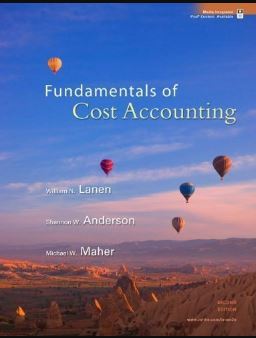
Fundamentals of Cost Accounting 2nd Edition by William Lanen, Carolyn Wells, Michael Maher
Edition 2ISBN: 978-0077274993
Fundamentals of Cost Accounting 2nd Edition by William Lanen, Carolyn Wells, Michael Maher
Edition 2ISBN: 978-0077274993 Exercise 24
Compare Current Cost to Historical Cost
Refer to the information in Exercise 14-26. In computing ROI, this division uses end-of-year asset values. Assume that all cash flows increase 10 percent at the end of each year. This has the following effect on the assets' replacement cost and annual cash flows:

Depreciation is as follows:

Note that "accumulated" depreciation is 10 percent of the gross book value of depreciable assets after one year, 20 percent after two years, and so forth.
Required
a. Compute ROI using historical cost, net book value.
b. Compute ROI using historical cost, gross book value.
c. Compute ROI using current cost, net book value.
d. Compute ROI using current cost, gross book value.
Refer to the information in Exercise 14-26. In computing ROI, this division uses end-of-year asset values. Assume that all cash flows increase 10 percent at the end of each year. This has the following effect on the assets' replacement cost and annual cash flows:

Depreciation is as follows:

Note that "accumulated" depreciation is 10 percent of the gross book value of depreciable assets after one year, 20 percent after two years, and so forth.
Required
a. Compute ROI using historical cost, net book value.
b. Compute ROI using historical cost, gross book value.
c. Compute ROI using current cost, net book value.
d. Compute ROI using current cost, gross book value.
Explanation
The following information is given in th...
Fundamentals of Cost Accounting 2nd Edition by William Lanen, Carolyn Wells, Michael Maher
Why don’t you like this exercise?
Other Minimum 8 character and maximum 255 character
Character 255


